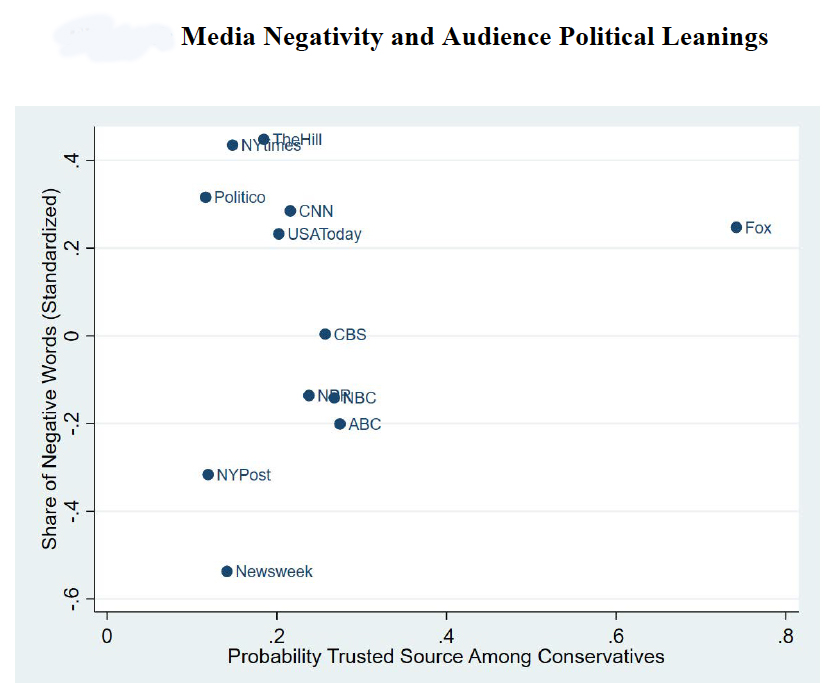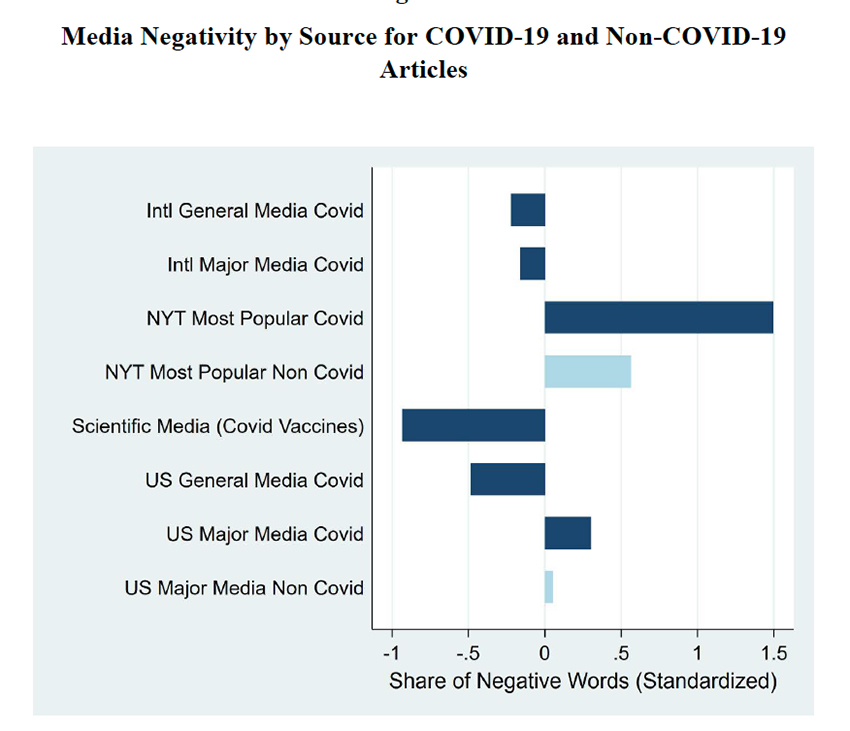A new paper from the National Bureau of Economic Research looked a news coverage of COVID-19 over the past year using textural analysis - where they looked at the tone, tenor, and words of negativity. (In a fractal kind of way, they prove their point about negativity in both their title and measurements, considering negative rather than positive words.) They identified English news source articles from January to the end of July, narrowing 9.4 million down to 20,000 from top print, television, and journal news sources [1] separating those from the U.S. and non-US sources. They further subdivided those COVID-19 articles into those on vaccines [2], reopenings, and case counts.
Negative words come “from established dictionaries of negative words,” yes, a surprising dictionary to me too. For example, loss is negative, cost is not. They also measured tone using machine learning to identify two and three-word phrases that human readers found in reading to be strongly negative. “White House” and “death toll” were both more negative than “clinical trial.”
- “COVID-19 stories published by the top 15 U.S. media outlets (by readership/viewership) are 25 percentage points more likely to be negative in content than more general U.S. sources or major media outlets outside the U.S.”
- The changing number of cases, up or down, had little impact on negativity
 “…negativity appears to be unrelated to the political leanings of the newspaper’s or network’s audience.” This is depicted in this graph. “COVID-19 stories from Fox News are about as negative as those from CNN.”
“…negativity appears to be unrelated to the political leanings of the newspaper’s or network’s audience.” This is depicted in this graph. “COVID-19 stories from Fox News are about as negative as those from CNN.”- The most popular articles in the N.Y. Times had “high levels of negativity, particularly for COVID-19-related articles.”
- Major media articles in the U.S. discussing social distancing and wearing masks are less numerous than stories about “President Trump not wearing a mask.” And the President and hydroxychloroquine coverage were greater than “all stories about companies and researchers developing vaccines.”
English language articles from outside the U.S. were also negative, but their major media was 25% less negative than ours. Interestingly, and remember this is before the Pfizer announcement, U.S. major media vaccine articles were 45% more likely to be negative relative to non-US general media. Parenthetically, it may well explain the spate of articles decrying Astra-Zeneca’s vaccine and the issues of correct dosages, as well as the reasonable concerns surrounding the logistics of extreme cold storage for the two RNA vaccines.
Here is the breakdown from their analysis.

Values to the left are positive words and tones; those to the right not so much. For school reopenings, and I will report my bias upfront, they all should be open for K through 8th grade; our major media was far more likely to be negative than overall media or our general media.
As the authors write
“In discussing this increase in mental health problems, U.S. Centers for Disease Control and Prevention recommend against heavy consumption of news stories about the pandemic. …. We conclude that the CDC’s implicit “warning label” against consuming too much U.S. COVID-19 media may be warranted.”
As I said initially, it remains unclear why we are so interested in the negative. What is clear, though, is that our most popular media delivers what we want to read – and when it comes to reading and getting our attention, what William Randolph Hearst found to be true still applies, if it bleeds, it leads.
[1] Newsweek, NY Post, LA Times, USA Today, Politico, The Hill, NY Times, ABC, CBS, CNN, Fox News, MSNBC, NBC, Science, JAMA, New England Journal of Medicine, The Lancet, and Nature
[2] The study period ended before Pfizer announced a vaccine.
Source: Why Is All COVID-19 News Bad News? NBER Working Paper 28110 DOI: 10.3386/w28110




